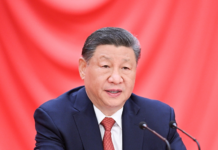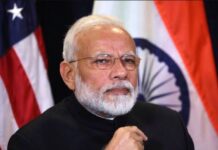Pakistan have made four changes to their 15-man squad for the upcoming World T20 owing to various reasons. That means over a quarter of the original team has been changed at the 11th hour, which isn’t something a serious contender would do before any major sports tournament. Of course, the new regime under Ramiz Raja taking charge was always going to have its impact, even if the chief selector, Mohammed Wasim, is the same.
Let’s make no mistake, this Pakistani squad has the potential to go all the way in this tournament. This is especially true given last month’s pullouts of New Zealand and England, and how Pakistan always seems to thrive in adversity. However, the cricketing decisions taken in the lead-up to the World Cup, from changing the coaches, to now making last minute replacements in the squad, aren’t going to bolster the confidence of the players that do eventually take to the field.
The four changes made to the squad have seen Sarfaraz Ahmed, Shoaib Malik, Fakhar Zaman and Haider Ali come in for Azam Khan, Sohaib Maqsood, Khushdil Shah and Mohammad Hasnain. As you can see four batters are replacing three batters and a bowler, which means that Wasim either got the basic composition of the squad wrong the first time, or this time around.
Shoaib Malik has come in for the injured Sohaib Maqsood, who had come into decent form in the ongoing National T20, but unfortunately has felt pain in his lower back. His inclusion along with Sarfaraz Ahmed’s will provide experience to the squad, while Haider Ali has been billed as the next big thing for a couple of years now, and now is his time to show some evidence. Meanwhile, Fakhar Zaman has done incredibly well in ODIs for the past four years now, but has struggled internationally in the shortest format, even more so now that he is unlikely to play up top with Babar Azam and Mohammed Rizwan occupying those spots.
Another opener who has had to sit out, and hasn’t even made the shortlist is Sharjeel Khan. He should have been included in the squad, based on his performance in the National T20. His ban has also been lifted and his stats have also improved as compared to others. Perhaps he has not been considered due to his tainted past.
Another player who has been needlessly overlooked is Mohammad Amir. He performs very well under pressure, whether that’s the pressure of a match situation — such as a contest against India for example –or other forms of turmoil that he faces.
Amir would have brought much needed experience to the bowling attack as well. Because, even with the addition of Sarfaraz Ahmed and Shoaib Malik, most of the squad is constituted of young cricketers, which may turn out to be a bad idea.
Sarfaraz has been facing a stiff task of dislodging Mohammed Rizwan from the starting 11, given that Rizwan has been the star performer for Pakistan across formats over the last two seasons. However, Sarfaraz’s leadership skills and experience will be very valuable in the tournament, especially given that T20 is his specialty. Shoaib Malik’s presence can also boost the middle order, given how that particular facet of Pakistan cricket has been struggling for a while. But for that Pakistan would need Shoaib Malik to be somewhere near his best form, and deliver when it matters. He is suited to the conditions in the UAE, which might work in his favour.
Even so, one can’t help but feel that Pakistan’s T20 squad is still a mixed bag. It has potential, yes, but could have done with the addition of players like Sharjeel Khan and Mohammad Amir. If they have been neglected owing to Ramiz Raja’s stance on zero tolerance to fixing, then one can’t challenge the decision.























